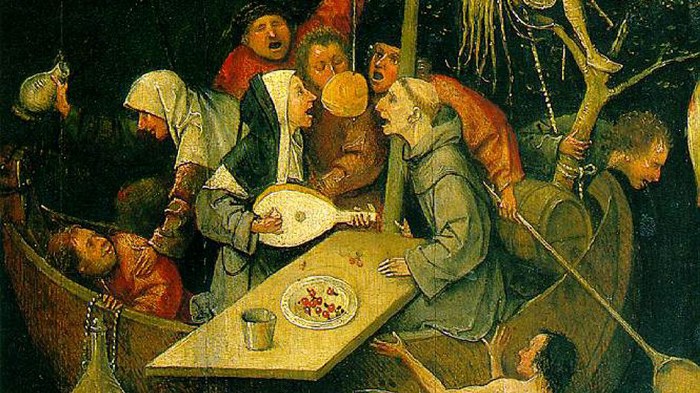
Jacinda Ardern’s Labour Party comprehensively won the 2020 General Election, drawing 50.0% of the party votes (1,443,546), up from 36.9% (956,184) in 2017. This allowed the Sixth Labour Government to continue governing alone, and without needing help from either the Greens or New Zealand First. This shift towards Labour is the main story of the 2020 General Election.
The main reason for it was the large number of white New Zealanders who shifted loyalty from National to Labour between 2017 and 2020.
The fact is that New Zealand is a majority white country (around 70% of New Zealanders are white according to 2018 Census data). So there only have to be small changes in average sentiment among white people to have major electoral effects. Winning back a large number of white voters from National was chiefly how Labour won a Parliamentary majority.
| Variable | Labour Vote 2020 | Labour Vote 2017 |
| European | 0.11 | -0.65 |
| Maori | -0.33 | 0.58 |
| Pacific Islander | 0.23 | 0.61 |
| Asian | -0.04 | 0.01 |
The numbers show a major change in sentiments towards Labour among white people. In 2017, the correlation between voting Labour that year and being of European descent was -0.65. By 2020, the correlation between voting Labour and being of European descent was 0.11. This is an enormous change, and it’s the primary reason for Labour’s comprehensive win at the 2020 General Election.
What it means is that the average white person, despite their relative wealth, supported the Labour Party in 2020. This wasn’t close to being true in 2017.
In fact, so many white people voted for Labour in 2020 that there was no longer any significant positive correlation between voting Labour that year and being either Maori or a Pacific Islander. Both of these correlations were very strong in 2017, but had faded away by 2020 owing to the fact that the Labour voting demographic was much whiter that year.
| Variable | Labour Vote 2020 | Labour Vote 2017 |
| No qualifications | 0.06 | 0.38 |
| Level 1 certificate | -0.05 | 0.07 |
| Level 2 certificate | -0.05 | 0.11 |
| Level 3 certificate | -0.01 | 0.20* |
| Level 4 certificate | -0.02 | 0.20* |
| Level 5 diploma | -0.15 | -0.75** |
| Level 6 diploma | 0.06 | -0.75** |
| Bachelor’s degree | -0.06 | -0.24 |
| Honours degree | 0.04 | -0.22 |
| Master’s degree | 0.01 | -0.19 |
| Doctorate | 0.17 | -0.17 |
The people who switched allegiance to Labour in 2020 were often the highly-educated ones who strongly supported National in 2017.
The correlations between voting Labour in 2017 and having any university degree were all negative and either significant or bordering on it. The correlation between voting Labour in 2017 and having a doctorate was -0.17, but by the time of the 2020 General Election, this had flipped to a positive correlation of 0.17. Holders of other degrees also became notably more Labour-friendly, although less drastically than those with doctorates.
Meanwhile, the correlation between voting Labour and having no qualifications weakened, from 0.38 in 2017 to an almost neutral 0.06 in 2020. This underlines the extent to which the new Labour supporters in 2020 were primarily from the middle class.
| Variable | Labour Vote 2020 |
| 20-24 years old | -0.02 |
| 25-29 years old | -0.07 |
| 30-34 years old | -0.01 |
| 35-39 years old | 0.03 |
| 40-44 years old | 0.06 |
| 45-49 years old | 0.04 |
| 50-54 years old | 0.10 |
| 55-59 years old | 0.18 |
| 60-64 years old | 0.17 |
| 65-69 years old | 0.17 |
| 70-74 years old | 0.20 |
| 75-79 years old | 0.21 |
| 80-84 years old | 0.27 |
| 85+ years old | 0.27 |
Those who shifted to Labour in 2020 weren’t just educated, they were also old.
In 2017, there was a correlation of -0.70 between being aged 50-64 and voting Labour, and a correlation of -0.61 between being aged 65+ and voting Labour. The reason for this was easy to explain at the time: old people overwhelmingly prefer conservative parties, a general rule across the entire democratic world.
They didn’t in 2020. Although the correlations between being old and voting National in 2020 are much stronger than the correlations between being old and voting Labour, the correlations between being aged 80-84 years old or 85+ years old and voting Labour in 2020 were both significantly positive, an enormous swing from 2017.
Expressed in rough terms, very few old people voted Labour in 2017, but in 2020 about half of them did. This may be because old people were particularly impressed by Jacinda Ardern’s handling of the Covid-19 pandemic, which threatened to kill many of them, or because they’re concerned about the kind of New Zealand that the National Party would create for their descendants.
| Variable | Labour Vote 2020 | Labour Vote 2017 |
| Managers | -0.42 | -0.69 |
| Professionals | 0.10 | -0.14 |
| Technicians and Trades Workers | 0.22 | -0.01 |
| Community and Personal Service Workers | 0.11 | 0.39 |
| Clerical and Administrative Workers | 0.25 | 0.05 |
| Sales Workers | 0.11 | 0.10 |
| Machinery Operators and Drivers | 0.06 | 0.54 |
| Labourers | -0.06 | 0.24 |
Commensurate with increased support for Labour among highly-educated people was increased support among high-skill occupations. Although there was a negative correlation of -0.14 between voting Labour in 2017 and working as a professional, by 2020 this had flipped to 0.10. A thaw in sentiments was also observed among managers. The correlation between working as a manager in 2017 and voting Labour was -0.69, but by 2020 it was only -0.42.
Another notable change from 2017 is that there is no longer a significant positive correlation between voting for Labour and working as a machinery operator or driver. This correlation was 0.54 in 2017, but a mere 0.06 by 2020. A similar, but smaller, pattern is observable with labourers and with community and personal service workers.
This shows that Labour expanded from its base to the centre ground between 2017 and 2020. Over these three years, Labour reduced its reliance on traditional working-class occupations, and increased its appeal to high-skill ones.
| Variable | Labour Vote 2020 |
| Personal income < $5,000 | -0.14 |
| Personal income $5,000-$10,000 | -0.06 |
| Personal income $10,000-$20,000 | 0.12 |
| Personal income $20,000-$30,000 | 0.21 |
| Personal income $30,000-$50,000 | 0.14 |
| Personal income $50,000-$70,000 | 0.02 |
| Personal income > $70,000 | -0.14 |
Labour also reduced its traditional reliance on poor voters.
In 2017, the correlation between voting Labour and having an income between $5,000 and $10,000 was 0.58. This is strong enough to show that Labour got many of their votes from there. By 2020, the correlation between being in this income bracket and voting Labour had become negative. This was because Labour shifted from the party of the poor to the party of the everyman.
In 2017, the correlation between voting Labour and being in any income bracket above $60,000 was significantly negative. However, in 2020, the correlation between earning over $70,000 and voting Labour was negative, but not significant. Much of this could be explained by wealthy people starting to feel that Labour had no real appetite for raising taxes.
Indeed, the correlation between voting Labour and median personal income became much less strongly negative between 2017, when it was -0.52, and 2020, when it was -0.27. So although wealthy people still avoid Labour, they do so much less eagerly than they did in 2017.
| Variable | Labour Vote 2020 | Labour Vote 2017 |
| Agriculture, Forestry and Fishing | -0.23 | -0.27 |
| Mining | -0.03 | -0.04 |
| Manufacturing | -0.05 | 0.23 |
| Electricity, Gas, Water and Waste Services | 0.10 | 0.08 |
| Construction | -0.03 | -0.00 |
| Wholesale Trade | -0.19 | -0.15 |
| Retail Trade | 0.23 | -0.03 |
| Accommodation and Food Services/Hospitality | -0.10 | 0.08 |
| Transport, Postal and Warehousing | -0.01 | 0.54 |
| Information Media and Telecommunications | 0.07 | 0.10 |
| Financial and Insurance Services | -0.04 | -0.08 |
| Rental, Hiring and Real Estate Services | -0.36 | -0.58 |
| Professional, Scientific and Technical Services | -0.05 | -0.20 |
| Administrative and Support Services | 0.01 | 0.37 |
| Public Administration and Safety | 0.36 | 0.20 |
| Education and Training | 0.12 | 0.15 |
| Healthcare and Social Assistance | 0.44 | 0.14 |
| Arts and Recreation Services | -0.16 | 0.02 |
Labour’s resurgence might have been pronounced along lines of race, age, education, and occupational skill level, but it was not particularly pronounced along any industry lines.
Generally speaking, the demographic of Labour Party voters became a lot closer to the demographic of everyday New Zealanders between 2017 and 2020. This was apparent from the fact that most correlations between voting Labour and working in a particular industry became weaker as Labour expanded from its working-class base.
Most striking was the correlation between voting Labour and working in transport, postal and warehousing, which crashed from 0.54 in 2017 to -0.01 in 2020. Other industries went in the opposite direction. The correlation between voting Labour and working in rental, hiring and real estate services went from -0.58 in 2017 to -0.38 in 2020.
Wholesale trade, retail trade, manufacturing, public administration and safety, professional and technical services, and agriculture, forestry and fishing all moved towards no correlation with voting Labour from 2017 to 2020. This reflects the broad-based increase in appeal achieved by Labour over the past three years.
One notable exception was the correlation between working in healthcare and social assistance and voting Labour. In 2017 this was not significant, at 0.14. By 2020 it had leapt up to 0.44, and was the strongest correlation between working in any industry and voting Labour. It may be that this workers in this industry, more than any other, anticipate a lot of help from the Sixth Labour Government in its second term.
| Variable | Labour Vote 2020 |
| No Source of Income | -0.18 |
| Wage or Salary | 0.02 |
| Self-employed or Own Own Business | -0.26 |
| Interest, Dividends, Rent, Other Investments | 0.03 |
| ACC or Private Work Insurance | -0.09 |
| NZ Super or Veteran’s Pension | 0.22 |
| Jobseeker Support | -0.09 |
| Sole Parent Support | -0.16 |
| Supported Living Payment | 0.28 |
| Student Allowance | 0.08 |
Labour also drastically reduced their reliance on unemployment and invalid’s beneficiaries. In 2017, the correlation between being on the unemployment benefit and voting Labour was 0.73 – by 2020 it was -0.09. This is partly because a great many non-unemployment beneficiaries switched to Labour, but it’s also because of strong support among unemployment beneficiaries for the New Zealand First, Maori, Aotearoa Legalise Cannabis, ONE, Vision NZ and Advance NZ parties.
The correlation between being on the invalid’s benefit and voting Labour in 2020 was significantly positive, at 0.28. This was much weaker than in 2017, when it was 0.58. As with the unemployment benefit, this reflects how Labour broadened their appeal beyond beneficiaries.
Perhaps the most striking change involved pensioners. There was a correlation of -0.51 between being on a pension and voting Labour in 2017. By 2020, this had flipped to a positive correlation of 0.22. The fact that Labour did much better among old people in 2020 has been discussed above. Along with the coronavirus response, the introduction and then doubling of a winter energy payment to pensioners no doubt helped Labour here.
There was still a significant negative correlation between being self-employed or owning one’s own business and voting Labour, but at -0.26 this was much weaker than most people would have guessed. The correlation between being self-employed and voting Labour in 2017 was -0.77.
| Variable | Labour Vote 2020 |
| National Vote 2020 | -0.16 |
| Greens Vote 2020 | 0.29 |
| ACT Vote 2020 | -0.12 |
| New Zealand First Vote 2020 | 0.06 |
| New Conservative Vote 2020 | 0.13 |
| The Opportunity Party Vote 2020 | 0.33 |
| Maori Party Vote 2020 | -0.37 |
| Advance NZ Vote 2020 | -0.19 |
| Sustainable NZ Vote 2020 | 0.02 |
| ALCP Vote 2020 | -0.27 |
| TEA Party Vote 2020 | -0.21 |
| Heartland NZ Vote 2020 | -0.17 |
| Social Credit Vote 2020 | 0.25 |
| NZ Outdoors Party Vote 2020 | 0.01 |
| ONE Party Vote 2020 | 0.25 |
| Vision NZ Party Vote 2020 | -0.23 |
That the average Labour voter is much whiter and better-educated in 2020 than in 2017 can be seen from the change in correlations between voting for Labour and voting for other parties.
For one thing, there were significant positive correlations between voting Labour in 2020 and either voting Greens in 2020 (0.29) or voting for The Opportunities Party in 2020 (0.33). These are much stronger than the correlations between voting Labour in 2017 and either voting Greens in 2017 (0.14) or voting for TOP in 2017 (0.00). Greens and TOP voters are disproportionately white and well-educated, two groups that heavily switched to Labour in 2020.
For another thing, there are now significant negative correlations between voting Labour in 2020 and voting for most of the Maori-heavy parties. Although Labour won a great number of votes from old white people, they lost a smaller number of Maori voters to fringe parties. Losing such marginal voters to fringe parties is the inevitable blowback from Ardern’s drive to the centre.
A further noticable change is the correlation between voting Labour in 2017 and voting National in 2017 (-0.94) and the correlation between voting Labour in 2020 and voting National in 2020 (-0.16).
This is a profound difference, and tells the story of a major shift in the demographics of the average Labour voter. In 2017, Labour and National were sharply opposed along lines of wealth, ethnicity, age and education. By 2020, most of those distinctions were eroded. National was still the party for rich old people, but Labour had transformed from the party of the disenfranchised, the brown and the working-class to the party of the average Kiwi.
| Variable | Labour Vote 2020 | Labour Vote 2017 |
| Percentage of males | -0.15 | -0.33 |
| Urban electorate | 0.17 | 0.11 |
| Percentage NZ-born | -0.05 | 0.22 |
| South Island electorate | 0.23 | -0.05 |
| Turnout Rate 2020 | 0.28 | n/a |
| Turnout Rate 2017 | n/a | -0.72 |
The Labour Party won a lot of male voters from National over the three years before the 2020 General Election. The correlation between voting Labour in 2017 and being male was -0.33. By 2020, this had fallen to -0.15. This suggests that Labour did well in 2020 not only because they demonstrated compassion since 2017 but also because they demonstrated competency.
Labour voters also became much less New Zealand-born between 2017 and 2020. This is mostly because there was not a disproportionate number of Maori voters this time. Immigrants to New Zealand tend to be wealthier than the New Zealand-born, so if Labour wins more middle-class voters they will also win proportionately more immigrants.
Some conspiracy theorists suggested that the 2020 General Election may have been rigged by Labour, the proof being Labour dominance in the rural South Island electorates. But rural South Island voters overlap heavily with the elderly, middle-class voters who switched overwhelmingly to Labour in 2020. In 2020 Labour won a significantly greater proportion of votes from South Island voters than from North Island ones, unlike in 2017.
One of the most striking changes between the 2017 General Election and the 2020 edition were the correlations between voting Labour and turnout rate. In 2017, the correlation between turnout rate and voting Labour was -0.72, which is extremely strong and evidence that Labour voters that year were mostly heavily disenfranchised people. By 2020, the correlation between turnout rate and voting Labour was 0.28, showing that Labour had won the centre between 2017 and 2020.
In summary, Labour won the 2020 General Election by broadening their appeal to the average New Zealander. Increased support for Labour from 2017 was especially noticeable among rich people, white people, old people and the well-educated, all of who are traditionally antipathetic to social democratic parties.
*
This article is an excerpt from the upcoming 3rd Edition of Understanding New Zealand, by Dan McGlashan and published by VJM Publishing. Understanding New Zealand is the comprehensive guide to the demographics and voting patterns of the New Zealand people.
*
If you enjoyed reading this essay, you can get a compilation of the Best VJMP Essays and Articles of 2019 from Amazon for Kindle or Amazon for CreateSpace (for international readers), or TradeMe (for Kiwis). A compilation of the Best VJMP Essays and Articles of 2018 and the Best VJMP Essays and Articles of 2017 are also available.
*
If you would like to support our work in other ways, please consider subscribing to our SubscribeStar fund. Even better, buy any one of our books!



